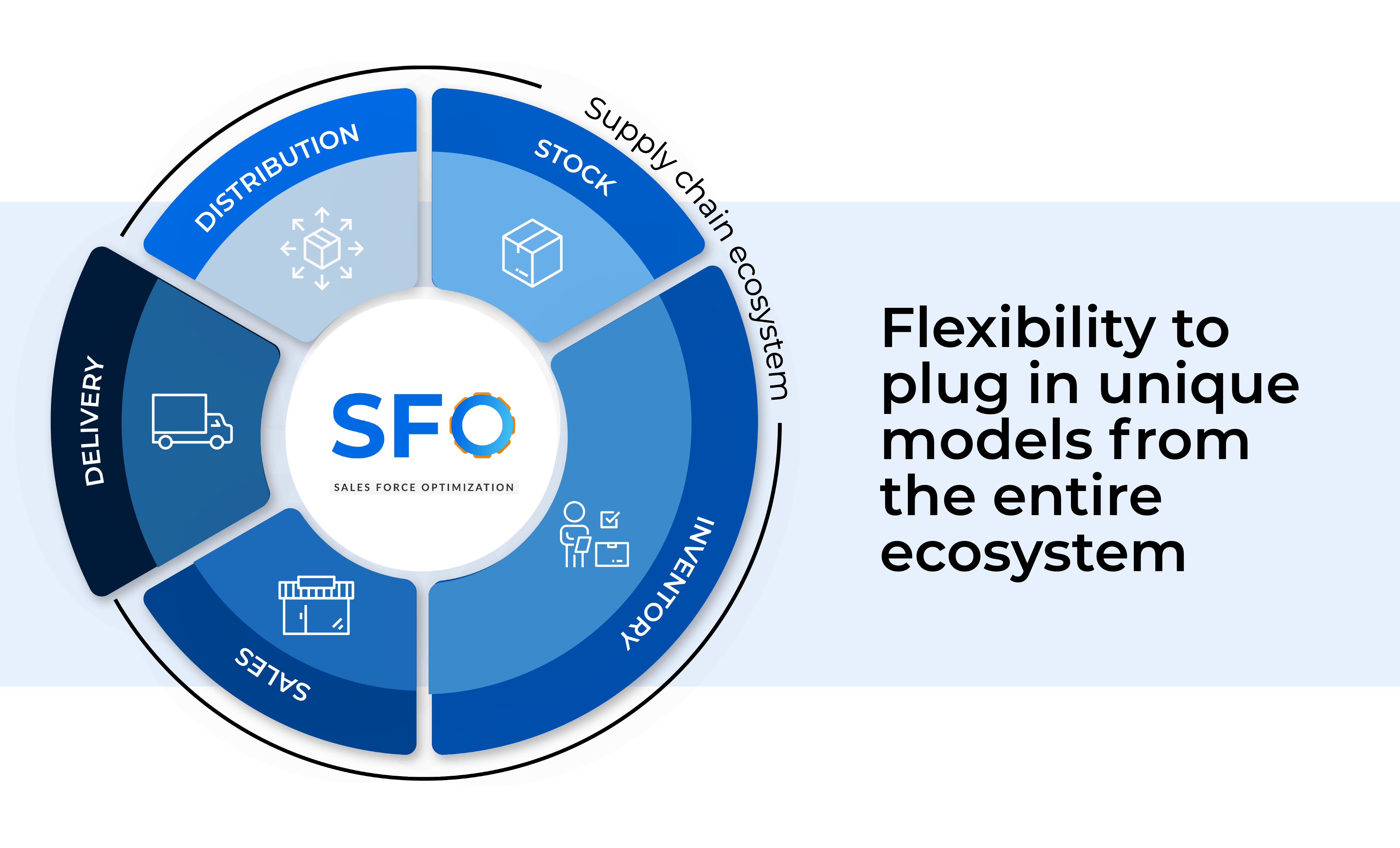In light of the increasing demands of the end customers and the transaction volume, it is of utmost importance for companies operating in the telecom sector to have fast, reliable, and flexible business operations. They have to be able to create new and innovative delivery solutions to ensure the sales readiness of their retail network. However, the process of digital transformation in logistics and supply chain is more than just installing a new system or software, it is a collaborative endeavour that requires strategic repositioning on part of the company. Sales Force Optimization platform is a one one-stop solution for the telecom operators that is capable of handling the complete process of inventory management, ordering, and real-time performance management through a user-friendly interface. The functionality to provide complete visibility of business demand and supply enables the users to control and optimize their sales and distribution.
Leveraging digital technologies for flexibility in supply chain management

The end-to-end process of product delivery and distribution has multiple levels and steps involved. This makes it essential for firms to rely on a digital Sales Force Optimization solution that can simplify delivery flows and make it easy for them to manage complex hierarchies and the product life cycle. It facilitates the companies in untangling the cluster of supply chain with a high level of flexibility so that it can be deployed at any stage of development.
It is important to note that depending on the unique requirements of the company, the sales force optimization solution has the flexibility to plug in unique modules from the solution into the supply chain ecosystem, instead of the whole platform. The implementation process of digital strategy does not have to be an ‘all or nothing’ approach. Companies should be able to pace the deployment of this solution to reap the full benefits and optimize revenues as well. The modularity of intelligent supply chain solutions facilitates this gradual digital transformation process. Additionally, the solution has the capability to replace a part of the system to provide an optimized view of the inventory or to be plugged into an existing delivery network and work in synergy with other systems. It also supports different kinds of delivery models, ranging from ‘push’ models with top-down distribution to ‘pull’ models where the endpoint, such as the store, proactively decides delivery stock.
Future of supply chain automation
Based on the current trends, the supply chains in the future will be autonomous and self-optimizing; they would not be driven by products and processes but by the needs of the customers. They will be characterized by the ‘outside-in’ approach and will be dependent on an ecosystem of modular capabilities which can be scaled and recombined as required. Therefore, as telecoms grapple to stay ahead in the competitive landscape, they require convenient, flexible, and transparent solutions like Sales Force Optimization to manage complete product life cycles and supply chains.


